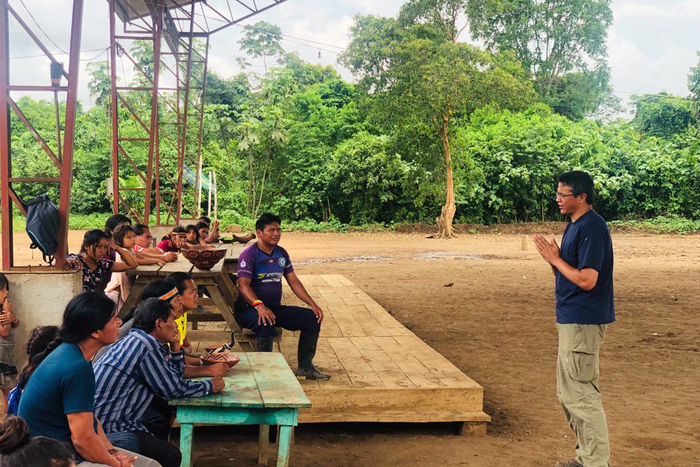DURHAM, N.C. — Malaria control programs in Amazonian Peru helped reduce the incidence of the deadly parasitic disease by 78 percent. That is, until the programs ceased to operate.

Credit: Duke University Photo
DURHAM, N.C. — Malaria control programs in Amazonian Peru helped reduce the incidence of the deadly parasitic disease by 78 percent. That is, until the programs ceased to operate.
Within four years of the programs being de-funded, malaria rates where right back where they started, according to a study appearing online in the April edition of The Lancet Regional Health Americas.
The rebound in malaria was driven not only by the removal of prevention programs, but also by climate change, the authors said. Average temperatures in Peru have risen a half-degree Centigrade in the last 20 years and higher minimum temperatures and more intense rainfalls with flooding were shown to drive the resurgence of the mosquito-borne disease.
The Project for Malaria Control in Andean Border Areas (PAMAFRO) operated from 2006 to 2011 with support from the Global Fund, resulting in sustained and significant reductions in malaria incidence across the Loreto district of Peru.
The program had four main interventions: Distributing insecticidal bed nets and insecticide re-treatment kits; improving diagnostics with new microscopes and rapid detection kits; distributing anti-malarial drugs and training health care workers to use them; and promoting community responses to mosquito breeding areas.
The incidence of Plasmodium vivax malaria declined from 43 cases per 1000 people per year to 10 cases. Plasmodium falciparum cases declined from 14 per 1000 per year to just 2.5 cases.
”Unfortunately, malaria control has been deprioritized in Latin America, with many international organizations and government agencies reducing funding commitments. The result has been predictable – rapid increases in malaria incidence have followed funding withdrawals throughout the region.” said senior study author William Pan, the Elizabeth Brooks Reid and Whitelaw Reid Associate Professor of global environmental health at Duke.
There had been 345,000 malaria cases across the region served by PAMAFRO in the year before the intervention, and just 175,800 in the final year of the program. By 2015, cases had returned to pre-intervention levels of 361,000 cases.
The study’s statistics showed some variability in the program’s effectiveness based on geography and which species of parasite was most prevalent. Malaria transmission proved tougher to root out in border areas at the edges of the intervention program and along river systems, where human migrations occur.
“There is a preponderance of evidence showing that sustained funding for malaria control is more cost effective than responding to resurgent transmission events, yet this fact seems to go unrecognized by funders,” added lead author Dr. Mark Janko and faculty member in the Duke Global Health Institute.
Globally, between 2000 and 2020, malaria reduction programs like this pushed the disease rate down from 81 cases per 1000 people per year to 59 per 1000 per year. The World Health Organization estimates that a lasting commitment to continue pushing malaria back would need about US $5.6 billion per year, but funding in 2019 was just US $3 billion.
”We’re showing that these programs clearly have worked and what human and environmental factors they need to address,” Pan said. “Malaria elimination is definitely possible in the Americas, but we must have global commitments and support immediately, before climate change pushes this goal out of reach.”
Funding for this study came from NASA, NIH, and the Bill and Melinda Gates Foundation.
CITATION: “The Impact of Sustained Malaria Control in the Loreto Region of Peru: A Retrospective, Observational, Spatially-Varying Interrupted Time Series Analysis of the PAMAFRO Program,” Mark M. Janko, G. Cristina Recalde-Coronel, Camila P. Damasceno, Gabriela Salmón-Mulanovich, Alisson F. Barbieri, Andrés G. Lescano, Benjamin F. Zaitchik, William K. Pan. The Lancet Regional Health Americas, Vol 20, April 2023. DOI: 10.1016/j.lana.2023.100477
Journal
The Lancet Regional Health – Americas
DOI
10.1016/j.lana.2023.100477
Method of Research
Observational study
Subject of Research
People
Article Title
The Impact of Sustained Malaria Control in the Loreto Region of Peru: A Retrospective, Observational, Spatially-Varying Interrupted Time Series Analysis of the PAMAFRO Program
Article Publication Date
15-Mar-2023




